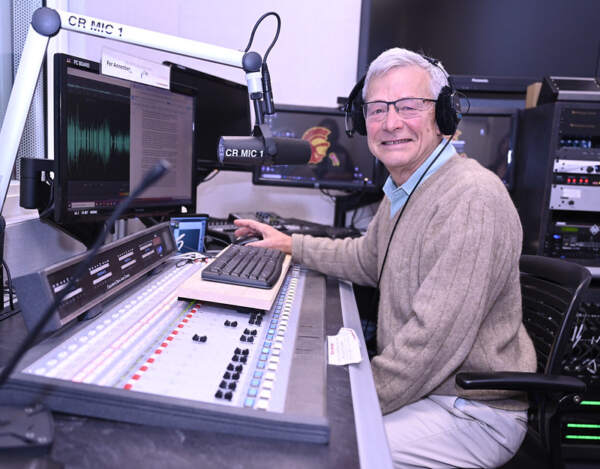Early in my career, I taught courses and conducted research in Chemical Engineering. My specialty was separation technologies and fluid mechanics. I investigated sludge, paints and cement. I enjoyed watching paint dry and spent a winter day on Racetrack Playa in Death Valley looking at the length of the petrified mud cracks – much to the amusement if not frustration of my family as the sun started to set. What caught my attention was that across this dried lakebed the cracks were all about the same length and I wondered why.
My curiosity about the world around me was further expanded as, later in my career, I transitioned to being an academic administrator where I worked with faculty and deans to build research and educational programs across the breadth of academic disciplines. In the process, I learned about challenges and ways of thinking beyond chemical engineering and gained an appreciation for the value of scholarship that takes place across a university. For example, I learned, to my astonishment, that not everyone is fascinated by mudcracks.
When I stepped back from being Provost of USC last year, I became interested in the energy transition and the role of critical minerals in enabling that transition to take place. I spent a fair bit of time looking at sources of lithium – needed in batteries electrify transportation. When lithium extraction comes to town, there is typically controversy. The extraction process often involves unwanted disruption if not degradation of the local environment. As I considered the globe’s needs for lithium and commitments to decarbonize the economy, I began to consider that we, as a public, tend to choose polarized positions on these topics and we rarely take time to recognize the balance needed to live the lives we enjoy.
In thinking about these topics, I had a conversation with Allison Agsten, Director of the Annenberg Center for Climate Journalism and Communication. We agreed that there is limited discussion about the trade-offs we face as we attempt to limit global warming and decided to create a podcast exploring these issues. We chose to look at how the communities in the Imperial Valley are thinking about establishing a substantial chemical industry involving the first commercial production of lithium by direct extraction from brines that are deep under the valley floor.
And what a ride!
Boom, I soon had an incredible team- Executive Producer Allison Agsten, Producer Mallory Carra, Associate Producer Natalie Lopez, Editor Spencer Cline, researcher Cindy Chai, art by Matthew Grubaugh. This team combined to create the podcast Electric Futures. I became a regular in Annenberg’s studios. We were out visiting the Valley, talking to community members, understanding lithium extraction technologies, learning the history and politics of the communities. We were educated about how previous waves of building solar and wind farms created a sensitivity to being the unwitting participants in “greenwashing” but also observed a resilient and pragmatic approach to and cautious embracing of new opportunities.
In the process we were welcomed by the community and I gained an appreciation for the environment. The Valley sits largely below sea level and in a harsh desert environment, containing the Salton Sea, burrowing owls and the iconic dippy duck. The indigenous groups look at the geothermal sites in the Valley as part of their cultural landscape. For over a hundred years vast quantities of Colorado River water have been diverted from exiting into the Gulf of California to truly make the desert bloom. Flocks of birds wheel in the sky at sunset. Hot in the summer, pleasant in the winter, growing crops year round, sand dunes and mountains to the east and west – the Imperial Valley is magical.
Those who live there created a verdant agricultural community and are proud of what they have built and want to make sure that what is built in the future will benefit those who live in the Valley. As we talked with members of these communities, we discovered that there are major challenges and differences of opinions about the implications and desire to expand the valley’s industrial base. The trade-offs in the Valley are much more nuanced than my original conception. All of this was brought together by the team in creating Electric Futures.
My career has exposed me to many disciplines – largely from the outside looking in. In this case, I have been part of a high performing team- participating in the creative side of the university. This has placed me on the inside where the making happens. This has been eye opening, educational, and enormously stimulating.
I learned many things in the creation of Electric Futures – about critical minerals, engineering, communities in the Imperial Valley, how to make a podcast, trade-offs associated with the energy transition and the quality of talent at USC. This has expanded my understanding of what makes a great research university work – learnings I hope to apply in the future.
C.F. Zukoski is the former USC provost and current Viterbi professor of engineering.
